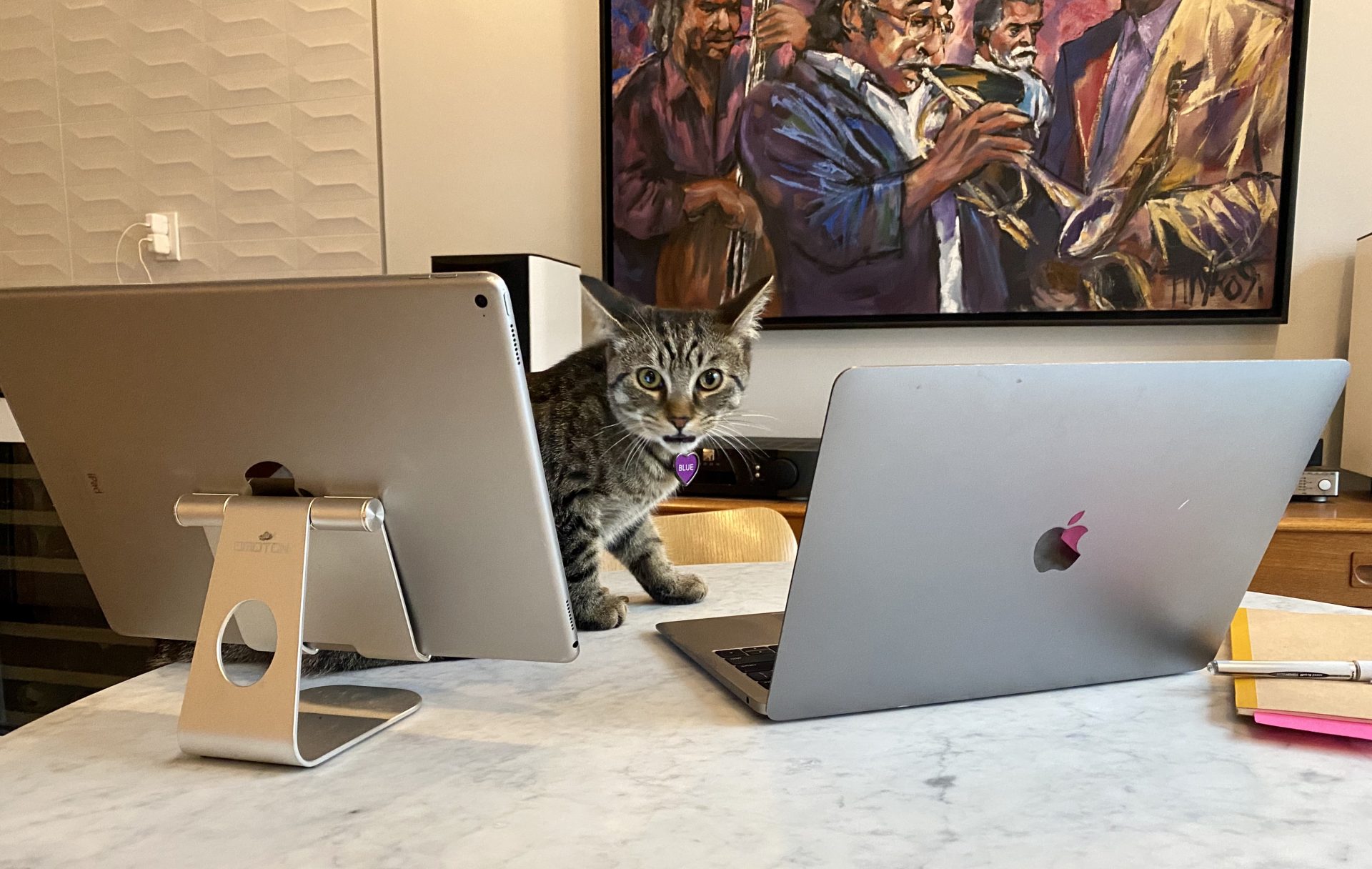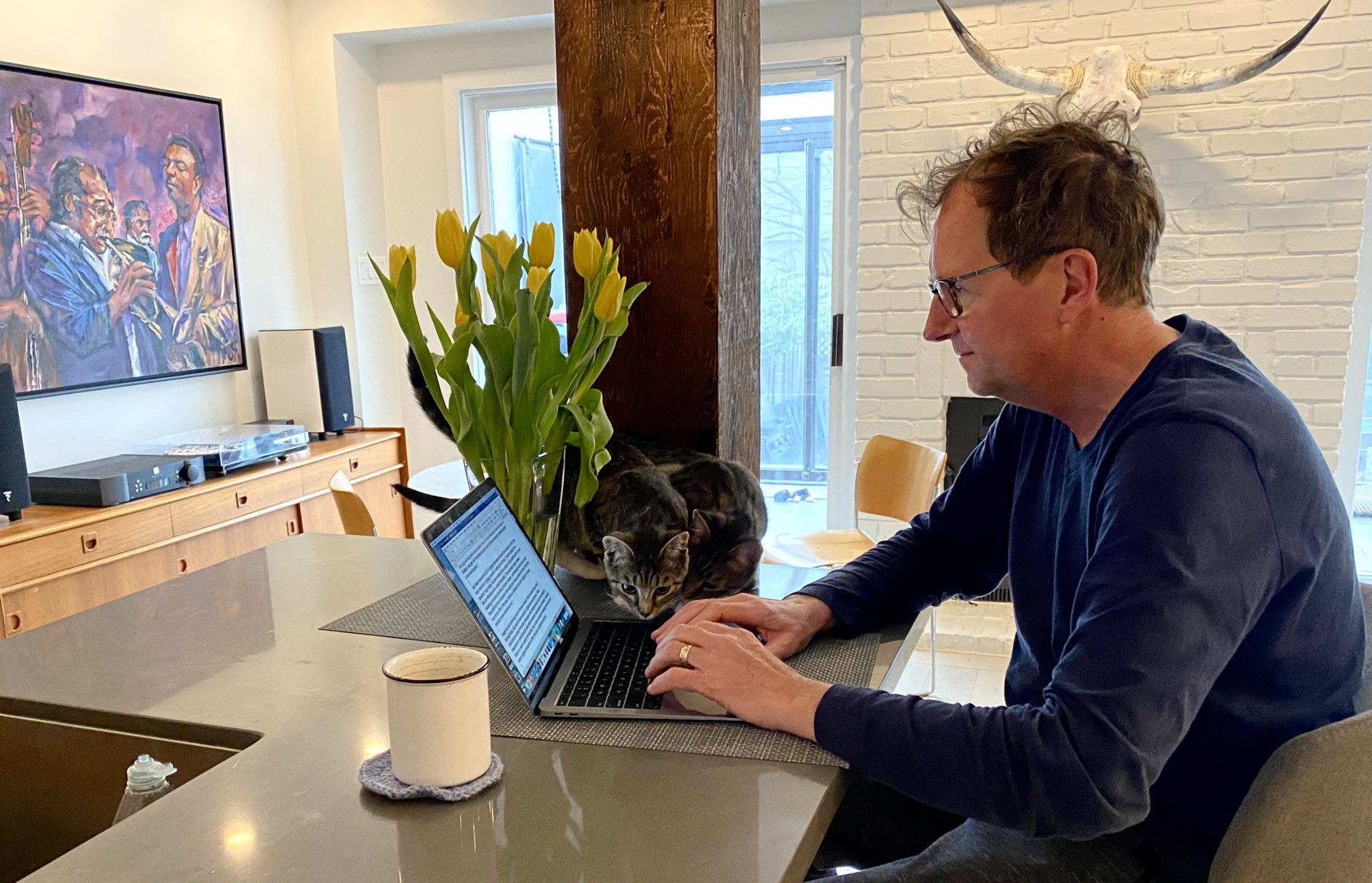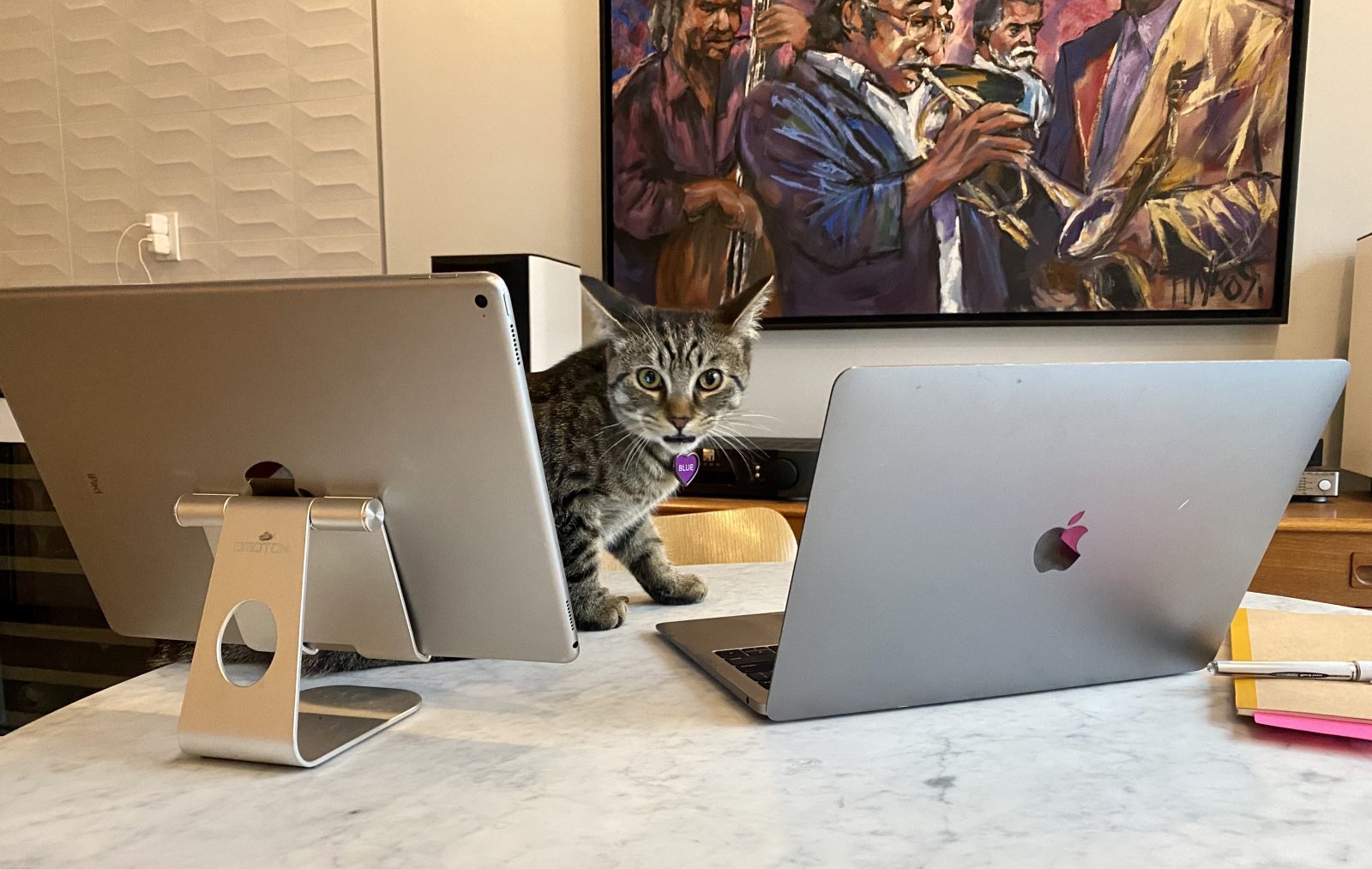Goldman Sachs CEO David Solomon, on a recent earnings call, said he rejects the notion of working from home as the new normal and calls it an aberration. “I do think for a business like ours, which is an innovative, collaborative apprenticeship culture, this is not ideal for us. And it’s not a new normal. It’s an aberration that we’re going to correct as soon as possible.”
JP Morgan’s chief executive Jamie Dimon has said that “working from home has had a negative effect on productivity.” Netflix CEO Reed Hastings calls remote working “a pure negative” and in an interview with the Wall Street Journal stated he would like to see staff return to the office “12 hours after a COVID-19 vaccine is approved” adding “I don’t see any positives. Not being able to get together in person, particularly internationally, is a pure negative. I’ve been super impressed at people’s sacrifices.”

So how has working from home really worked, now that we have been at it for more than a year? Was it a necessary evil and our only option in a difficult time, or has it been the accelerator to much needed work adjustments that bring the modern office in line with technology?
A recent global survey that samples from 659,000 respondents conducted by Microsoft, suggests that working from home may not be as rewarding as we were led to believe. Sixty-five per cent of respondents reported craving more in-person time with their teams; 42% of employees say they lack essential office supplies at home and a staggering one in 10 do not have adequate Internet connectivity to do their jobs, not to mention the isolation of being removed from your colleagues. However, 70% of workers still want a flexible remote work option to continue once COVID-19 is behind us, leading to what is now being touted as a hybrid model, that will incorporate both in-person and remote working. Is this the best of both worlds or is it a compromise?
The work from home experiment started more than a year ago, mostly because companies had no choice. Early concerns of decreases in productivity and communication failings have mostly been avoided and 61% of business leaders say they are thriving right now. However, those that do not have leadership authority do not share that optimism and state they are struggling, with 54% feeling overworked and 39% feeling exhausted from working at home. The work is being done, but the reward of being part of something bigger and collaborative has been eroded with the loss of energy from an office environment.

Martin Szpiro, President & CEO of Jam Industries, sees working from home being phased out but remaining part of the company tool set. “This fall” says Szpiro, “departments will gradually return to the office, but we must be sensitive to the fact that people have built lifestyles around working from home. So, we will ask that departments phase in a return slowly. Some employees may only come in three days a week, for example. But we feel everyone needs to come in weekly at some point. We can see that our culture has been somewhat broken through the alienation from working from home. That is easy to identify with the new people onboarded during the pandemic. They are just not part of the ‘team’ yet.”
Moto Shimizu, Vice President, Yamaha Music Canada agrees; “our back-office employees in admin, finance and sales/marketing, who currently on remote work, will be back in the office to a certain degree after the current COVID crisis. But it won’t be a simple “back to normal”. We also have to deal with a sense of unfairness among employees who must work in the office due to warehousing and physically handling inventory and an increased expectation of flexibility among employees who can work remotely. For long term, I think all of us are going to have to move toward less a contact environment even inside an office so we are prepared for the next pandemic that could present in an even bigger scale.”
Any fears, that working from home would lead to a slack work culture is quickly refuted in the data. According to Microsoft, time spent in Microsoft Teams and video conferencing has more than doubled (2.5X) globally during the pandemic and, aside from a holiday dip in December, continues to climb. The average Teams user is sending 45% more chats per week and 42% more chats per person after hours. The number of e-mails sent in February 2021 vs. February 2020 is up by a staggering 40.6 billion. Interestingly, 62% of all meetings conducted on Microsoft platforms are unscheduled and conducted ad hoc and yet regardless of the time incoming messages arrive, 50% of people respond to Team chats within five minutes or less, adding to worker pressure to keep up. Call it a kind of digital FOMO: you’re isolated, and you fear missing out, so you stay connected 24/7.
Philippe Rayes, President & CEO of Sherpa Group thinks “there are some practices adopted during the pandemic that we will retain permanently. Starting with the virtual meetings that I think will continue to be privileged. Of course, we are looking forward to having face-to-face meetings again as they bring a human dimension to our professional interactions. But no one can deny the simplicity and efficiency of a Teams Video Meeting, whether it is with our colleagues, customers, or suppliers. When it comes to working from home, in our company as well as in other workplaces, I believe we will see more flexibility when it comes to a hybrid home/office work schedule.”
Of all the employees, Gen Z, those between the ages of 18 and 25 are the ones suffering the most from working from home with 60% of survey respondents in this demographic, saying they are merely surviving or flat-out struggling right now. Based on their age and being new to their careers, Gen Z are the most likely to feel the impact of isolation, struggle with motivation, and also lack the financial means to create a proper in-home workspace.
Joel Seigel President & CEO of Gentec International, shares that his company currently has about one third of its workforce working from home. “Over the course of the pandemic,” says Seigel, “we have instituted the process of having staff work from home that can effectively do so outside the building. This comprises mostly sales, marketing, and some accounting functions. However, with that said, we find that most of these staff members are more productive in the building and actually prefer to be here. While this may not be 100 per cent of the case, it will be our direction to be at full capacity in-house, providing we are allowed to do so.”
Seigel may be witnessing a trend in his own company that is shared through the Microsoft data: that staff are more siloed in a digital work environment. While collaborations among immediate colleagues have strengthened during the pandemic, interactions or what Microsoft calls distant networks, have actually diminished, meaning those in a sales capacity for example, may not be as productive seeking new accounts when a digital introduction is their only source of communication.

One asset for companies embracing a hybrid model however is that talent is no longer restricted to an immediate area. Job postings on LinkedIn increased more than five-fold during 2020 with 46% of remote workers surveyed saying they plan to move to a new location simply because they can. Alternatively, people no longer have to leave their house or community to expand their career, meaning the talent pool available for hire is truly national, if not global.
Being at home and in isolation has also given many employees time for reflection on life’s purpose and revaluating priorities; 41% of the global workforce is likely to consider leaving their current employer within the next year and 46% are planning to make a major pivot or career transition. There are currently four million tags for #liveyourbestlife on Instagram and half a million tags for #lifestooshort. “We nearly have a doubling of job switching-intent,” says LinkedIn Senior Editor-at-Large George Anders. “People are going to try and compress into one year what they might ordinarily have done in two.”
Lucy Lentini, Vice President, Totem Acoustic admits that “COVID has undoubtedly exhausted all of us, but it has also been a catalyst for improving Totem’s internal systems and has given the company opportunity to refine and reinvent many aspects of the business. Being a global company,” adds Lentini, “means that, in a way, we had already adopted a hybrid work model, because of our widely spread international sales team and distribution networks. So digital communication through FaceTime, Zoom, WhatsApp and so on, has always been part of our communication playbook. But, nothing beats in-person collaboration both with our team and our customers. We have always been heavily reliant on demo music, in-person meetings, and trade shows to present our products, and that magic just doesn’t come across through a video meeting. Trust me, we’ve tried! So, returning to an in-person face-to-face business environment where we can also travel cannot come back fast enough.”
While many industry leaders see working from home as a negative, a recent study by Forbes states the opposite is true and cites tech giants such as Microsoft, Facebook, Twitter, and Shopify making working from home a permanent experience. The skeptic in me sees this as somewhat self-serving, as revenue for all those companies increases the longer we stay remote via expanded cloud computing, online commerce, and added social media usage.
Gordon Simmonds, CEO of the Lenbrook Group of Companies weighs in stating, “we’ve had considerable time now to monitor what “work from home” can look like – what can and cannot be accomplished. Many on our team are anxious to get back to an office setting and the community and collaboration that that encourages. Others have grown to value the flexibility and time saving that work from home can bring. Others likely fall somewhere in between. Those of us leading the company feel we have a much better understanding of the impact, the strengths and the weaknesses of trying to do “teamwork” from home. Since Lenbrook’s culture and values are built on community, teamwork, and collaboration, we believe we’re going to be best served in an office setting.”
Adds Simmonds, “honestly, we have always had lots of people on our team in other parts of the world working from home. So, for us this will always be situational, but we will clearly establish a preference that our Ontario-based team be working from our office in Pickering as much as possible. But we will probably look at each situation more individually now, as opposed to making hard and forever statements. We’ve learned that we can really trust our team to deliver wherever they are working by setting the right objectives and measuring key results. That said, we believe that teamwork and collaboration happen best, when teams are working in proximity.”
2020 has certainly shown the resiliency, adaptability and creativity of the human spirit to be able to work wherever we have been placed. As the Microsoft study concludes “as people navigated unprecedented stress on the frontlines, balanced childcare and homeschool, worked from living rooms, quieted barking dogs, and pushed away curious cats, something changed: work became more human.”
The study shows that one in five have met their colleagues’ pets or families virtually, and as we clung to each other to get through the year, one in six have cried with a colleague this year. We’ve laughed at lawyers turning into cats. We have had Zoom cocktails with friends and colleagues. But mostly, we have been isolated and adapted to something akin to second best. For most of us, a return to the office will be a welcome relief and the surest sign of a return to normalcy.
respond to John at [email protected]









